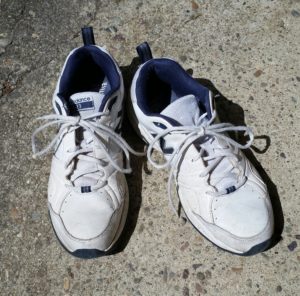 Another reason to improve your lifestyle - to treat erectile dysfunction (ED).
Another reason to improve your lifestyle - to treat erectile dysfunction (ED).
From Medical Daily: Erectile dysfunction can be reversed without medication
Men suffering from sexual dysfunction can be successful at reversing their problem by focusing on lifestyle factors and not just relying on medication, according to research. Researchers have highlighted the incidence of erectile dysfunction and lack of sexual desire among Australian men aged 35-80 years.
Over a five-year period, 31% of the 810 men involved in the study developed some form of erectile dysfunction. The major risk factors for this are typically physical conditions rather than psychological ones, such as being overweight or obese, a higher level of alcohol intake, having sleeping difficulties or obstructive sleep apnoea, and age.
"The good news is, our study also found that a large proportion of men were naturally overcoming erectile dysfunction issues. The remission rate of those with erectile dysfunction was 29%, which is very high. This shows that many of these factors affecting men are modifiable, offering them an opportunity to do something about their condition," Professor Wittert says.
"Erectile dysfunction can be a very serious issue because it's a marker of underlying cardiovascular disease, and it often occurs before heart conditions become apparent. Therefore, men should consider improving their weight and overall nutrition, exercise more, drink less alcohol and have a better night's sleep, as well as address risk factors such as diabetes, high blood pressure and cholesterol.
A question that some may have about the persistence of the HPV virus on surfaces . From Medical Daily: Sex Toys Can Show Traces Of HPV 24 Hours After Use, Have Increased Chance Of Spreading Virus, Despite Cleaning
Shared sex toys between two women and between women and men could have traces of the human papillomavirus even after they’ve been cleaned. According to a study published in the journal Sexually Transmitted Infections,researchers from the Division of Infectious Diseases at the Indiana University School of Medicine found that women could be potentially putting their partners at risk...HPV is one of the most commonly sexually transmitted diseases, approximately 79 million Americans are currently infected with the disease, and that number increases by 14 million each year.
The study focused on women between the ages of 18 and 29 who had been in sexual relationships with both a man and a women in the prior year. They gave each woman a cleaning product, one vibrator made of thermoplastic elastomer, and another made out of soft silicone. The participants were asked to swab the vibrations after vaginal use, immediately after cleaning, and 24 hours later.
The authors found that in 75 percent of vagina samples (9 out of 12), HPV was detected. In the nine vibrators from the HPV-positive women, 85 percent (8) of showed signs of the virus; after cleaning, 56 percent (5 of the 9) had traces of HPV. Twenty-four hours after cleaning the contaminated vibrators, 40 percent (2 out of the 5) of the swabs were still positive. They also found that silicone vibrators had a lower detection rate 24 hours after cleaning.

 According to a recent large
According to a recent large